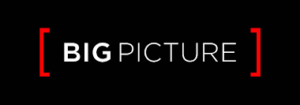As you see on the unit 2 assignment sheet you will need to have at least 1 primary source and 1 scholarly source in your research portfolio.
We’ve talked a bit about scholarly sources already–take a look back at this post for a refresher:
Now let’s talk about what a primary source is. A primary source is typically one based on direct first-hand experience or observation of an event or issue. What constitutes a primary source will vary by discipline/research topic. For example, in history, a primary source might be a document or artifact that dates to the time period under consideration (a letter written by a soldier during the Civil War, for example, or a photograph taken at that moment in time). In literature, a primary source might be the poem or other literary work that the author is analyzing. In the sciences (both social sciences and “hard” sciences), primary sources might be data from experiments conducted or field notes recording one’s observations or actual artifacts from that research process.
There are certainly situations in which opinion polls/surveys constitute primary sources, as well, providing fresh, direct insight into attitudes on a topic. Similarly, narrative sources (blog posts, interviews, autobiographical writings) might constitute primary sources, too. The basic idea is that a primary source gets us as close as possible to a particular phenomenon or topic, providing us information that is as unfiltered and direct as can be had.
By contrast, most of the sources you find yourself working with are secondary sources, which include primary sources among their evidence. Such sources provide you with commentary and analysis that is at least one step removed from the topic itself. Note that both types–primary and secondary–are valuable in any research inquiry. Primary sources, because they are so individualized, really don’t work in isolation. They need the context of additional analysis, such as is provided by secondary sources, to be meaningful. This is yet one more reason why an array of sources, serving different functions and representing different perspectives, is so critical to the success of researched writing.
And one more note on the subject of source types: it’s worth striving for a “balanced diet” of information. Scholarly sources are kind of like broccoli–maybe not as tasty and easy as some other types, but with a lot of valuable nutrients. They’re good for the overall health of our inquiry, even if they’re not our favorite go-to item. For more on this analogy, I encourage you to watch this really accessible and interesting TED talk by JP Rangaswami:



